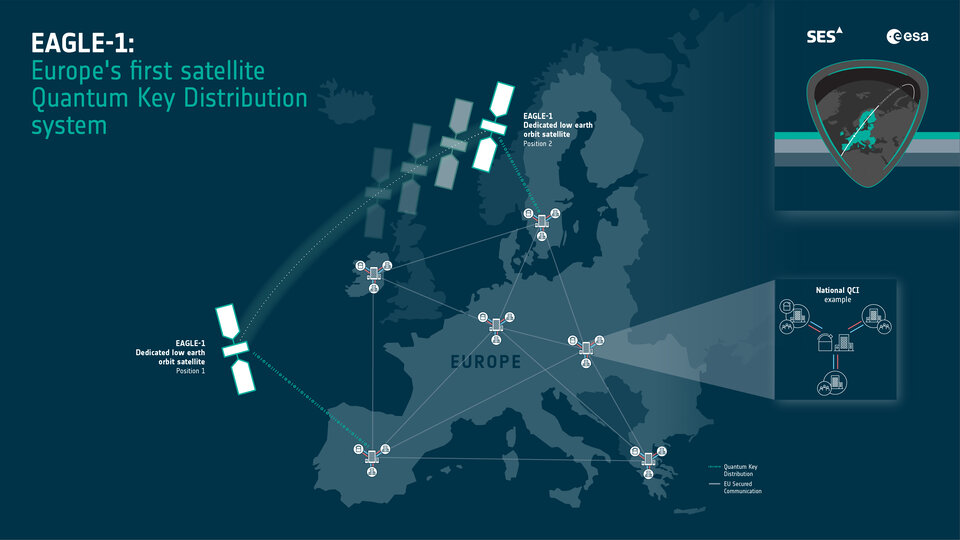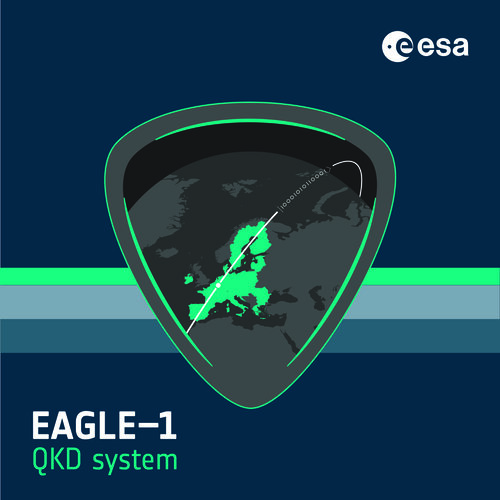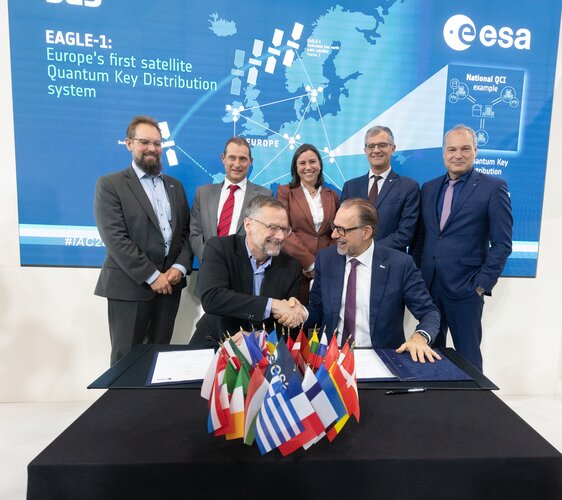Eagle-1
Eagle-1 will be the first European space-based quantum key distribution system developed as a partnership between the European Space Agency (ESA), the European Commission and space companies in Europe, led by SES Techcom.
The Eagle-1 project is paving the way towards an ultra-secure network that uses quantum key distribution (QKD) to keep information safe, significantly boosting European autonomy in cybersecurity and communications. QKD uses the laws of physics to distribute encryption keys in such a way that any attempt to eavesdrop is immediately detected.
The project will demonstrate the feasibility of QKD technology within the EU using a satellite-based system. To do so, the system is built on key technologies developed under ESA’s ScyLight programme, with the aim of validating vital components advanced within the EU.
It will demonstrate and validate quantum key distribution technologies from low Earth orbit to the ground and provide valuable mission data for the development and deployment of the European Quantum Communication Infrastructure (EuroQCI), which will be integrated into the European secure connectivity system. It will allow the EU to prepare for a sovereign, autonomous cross-border quantum secure communications network.
Early adopters can acquire QKD Ground Systems to receive the signal from Eagle-1 satellite to test this technology for themselves. As the satellite orbits, these systems will be able to receive the optical signals, as seen in the image below. By using satellites for QKD, encrypted keys can be sent through longer distances, uninterrupted and unobstructed.

Eagle-1 is a Partnership Project within ESA’s Advanced Research in Telecommunications Systems (ARTES) , and the SES Techcom, a satellite company headquartered in Luxembourg, which is leading a consortium of more than 20 European companies.
It will initially use an upgraded optical ground terminal from the German Aerospace Centre (DLR) alongside a new optical ground terminal to be developed by a team from the Netherlands. The Eagle-1 satellite platform from the Italian company SITAEL will carry a quantum-key payload built by Tesat Spacecom of Germany and will be operated by Luxembourg-headquartered SES. Other ESA Member States involved in the project include Austria, Belgium, the Czech Republic, Italy and Switzerland.
The Eagle-1 satellite is due to launch in late 2026/early 2027 and, after its initial tests in orbit, it will then complete three years of in-orbit validation supported by the European Commission.









